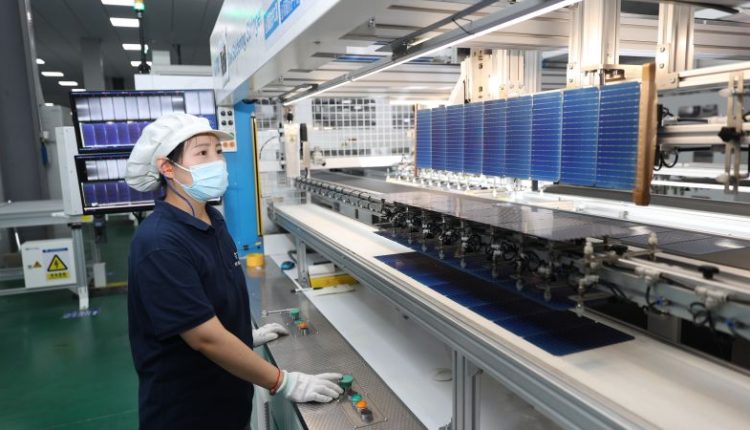Factory activity in China contracted for a fifth straight month in August, adding pressure on Beijing to roll out more stimulus measures to bolster the faltering economy.
The official manufacturing Purchasing Managers’ Index (PMI) — which surveys larger companies and state-owned enterprises — stood at 49.7 in August, up from July’s 49.3, according to data released by the government’s National Bureau of Statistics (NBS) on Thursday. A reading above 50 indicates expansion, while anything below that level shows contraction.
It was the third straight month that the index had improved from the previous month, and was better than economists were expecting.
However, China’s vast manufacturing industry has now been contracting since April, according to the data, and there was more evidence Thursday that other areas of the economy are weakening.
The non-manufacturing PMI, which measures business activity in services and construction, stood at 51 this month, down from 51.5 in July, according to the NBS.
“The PMI surveys suggest a slight improvement in economic activity in August,” wrote analysts from Capital Economics. “But overall economic momentum remains weak and more policy support is needed to avoid a renewed slowdown later this year.”
China’s economic growth has slowed since the end of the first quarter when a rally driven by the end of pandemic restrictions faded. Beijing has acknowledged it’s facing a “tortuous” recovery and has announced a flurry of limited stimulus measures to reignite economic growth.
Measures so far include allowing local governments to borrow more to fund infrastructure projects, slashing interest rates to bolster bank lending, and easing mortgage rules to revive demand for homes. Some of these moves may have started to bear fruit this month, analysts said.
Thursday’s PMI data showed the sub-index for the construction sector jumped significantly to 53.8.
It likely reflected “a pick-up” in infrastructure construction, because Beijing has instructed local governments to tap unused bond quotas before the end of September and use the cash to fund projects, the analysts from Capital Economics said.
Domestic demand also appears to have improved, with the sub-index for new manufacturing orders jumping above 50 for the first time in five months.
“This must be mainly domestic orders, as the export orders series remains bombed out,” said Robert Carnell, regional head of research at Asia-Pacific for ING Group.
This provides “some encouragement” about the near-term outlook, he added.
But the overall economic landscape still isn’t looking very bright.
The sub-index for the services industry, the biggest source of employment for younger people, fell to the lowest level since January and far below pre-pandemic levels.
The current support from fiscal policy could also prove short-lived, as local governments have been told to spend all the proceeds from their special bond issuance, a type of debt that’s mainly used to finance infrastructure projects, by the end of October, after which infrastructure investment may drop back until more fiscal powder is provided, the Capital Economics analysts said.
And China’s real estate crisis is deepening. Country Garden said Wednesday it was at risk of defaulting on its huge debts after posting a $7 billion loss for the first six months of the year.
Read the full article here

